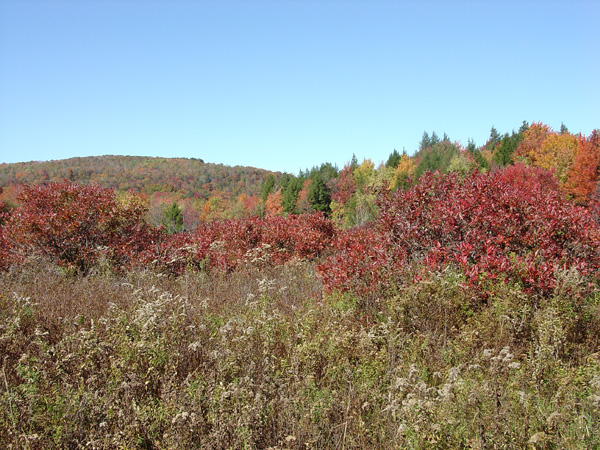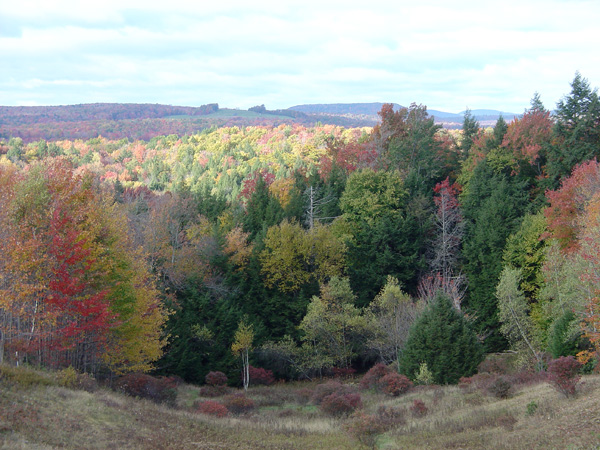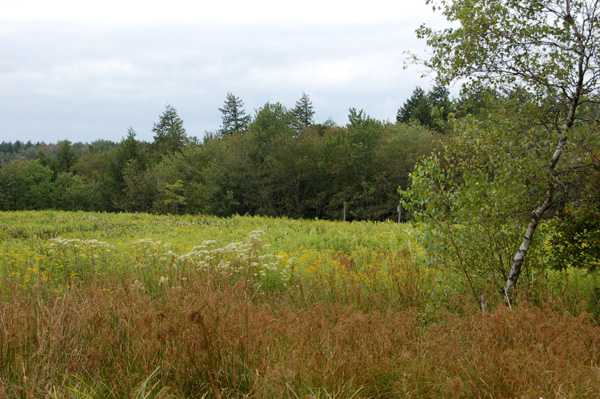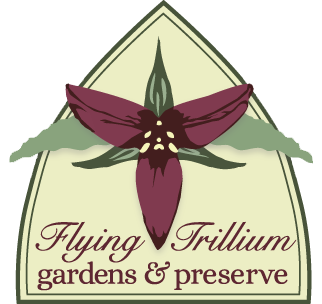Successional Shrubland

The field we call successional shrubland is likely abandoned pasture, and probably never produced hay. Unlike the other fields that had been mowed at least annually for hay, this field is well on its way toward reverting back to forest. This meadow is being overtaken by highbush blueberry and other shrubs. Without this mowed path, […]
Northern Hardwoods

While hemlocks make up the largest percent of our forest cover, we also have a diverse assortment of northern hardwood species and their associated understory, especially on the higher, drier terrain. Birches make exclamation points at the edge of the woods. Our largest ash tree; hoping EAB doesn’t find her. Northern hardwoods: birch, beech, and […]
Natural Meadows

The title of this gallery could accurately be re-titled “Successional Hayfields,” as these fields have had no inputs other than occasional mowing for the last 20 years. It is fascinating to see species of goldenrod and asters, as well as common milkweed, overcoming timothy and other hay grasses. Goldenrods peak after the tall white asters […]
Farm, Forest, and Lake

A short drive from the the Gardens, our managed forest preserve borders a shallow lake. An “antique” farmhouse and barn are located at the edge of the forest. The farmhouse is over 100 years old. Bluestone patio by Darder Stoneworks Old farm fields surround the house. and the barn. Old field/meadow in full bloom. Mowed […]
Ephemeral Ponds

Ephemeral ponds, also called vernal ponds, are small bodies of water that typically do not hold water throughout the season. For this reason, they cannot support fish. This makes them ideally suited to be safe breeding habitat for amphibians like frogs and salamanders. Turtle Pond is being restored. This wood frog is returning to the […]
Blueberry Barrens

We call this area of the Preserve blueberry barrens because blueberries, both highbush and lowbush (Vaccinium spp.) are the dominant species of plants found here in the sandy, depauperate soil, with mountain laurels (Kalmia latifolia), another member of the heath or Ericaceous family. running a close second. The bright green groundcover in the center is […]
